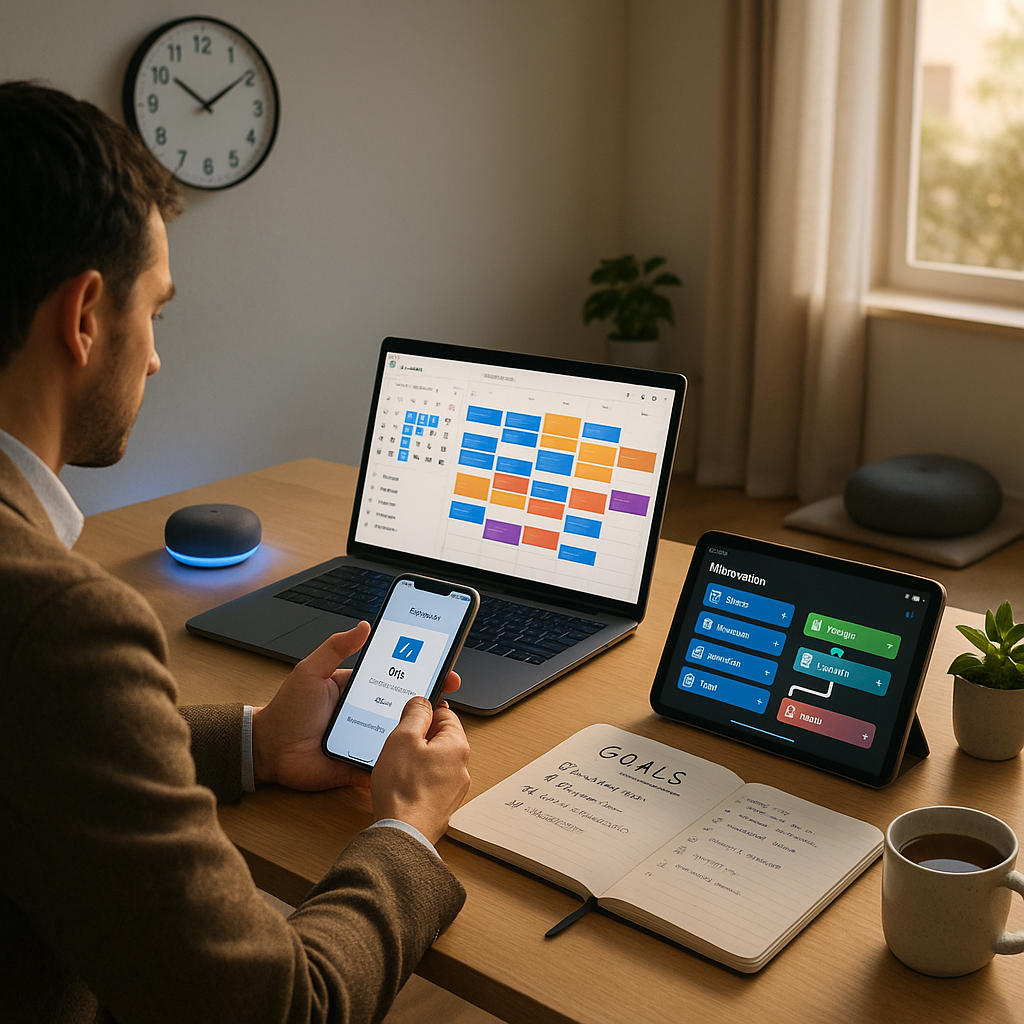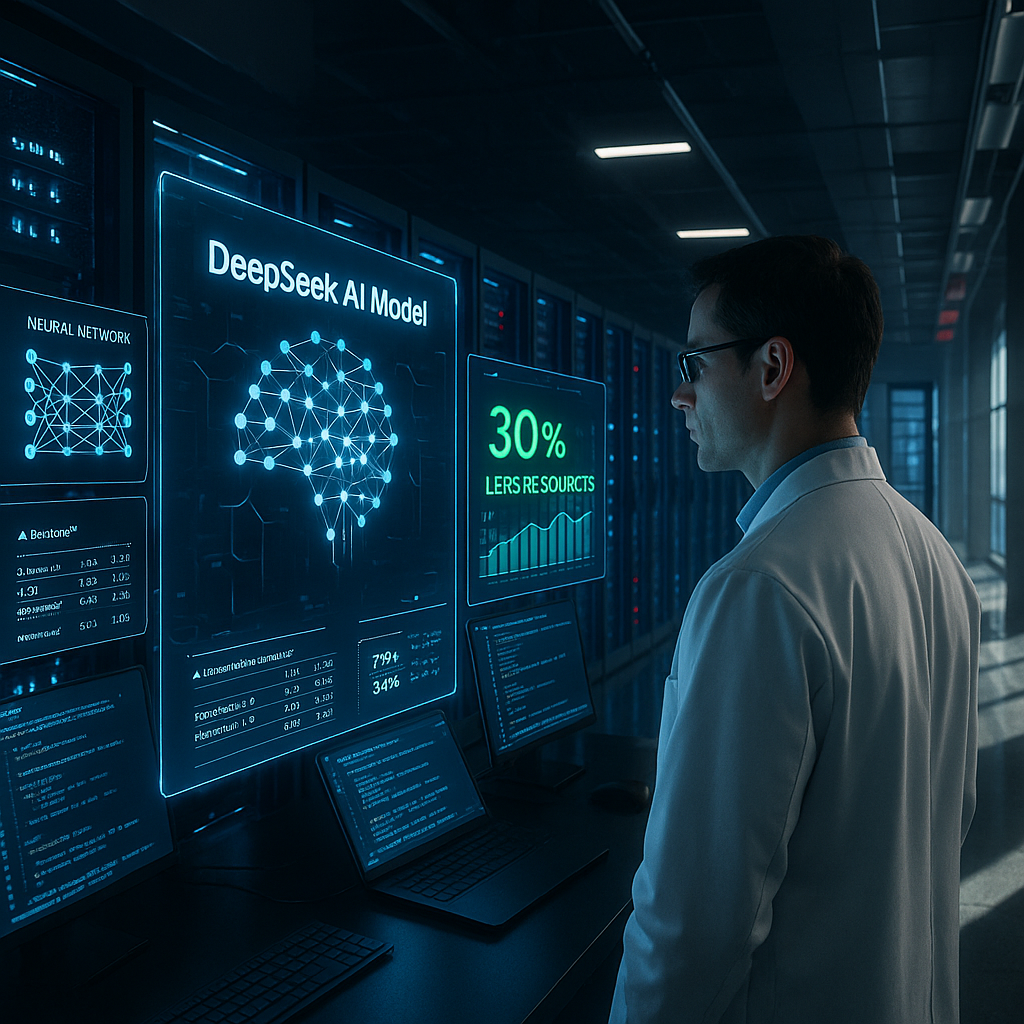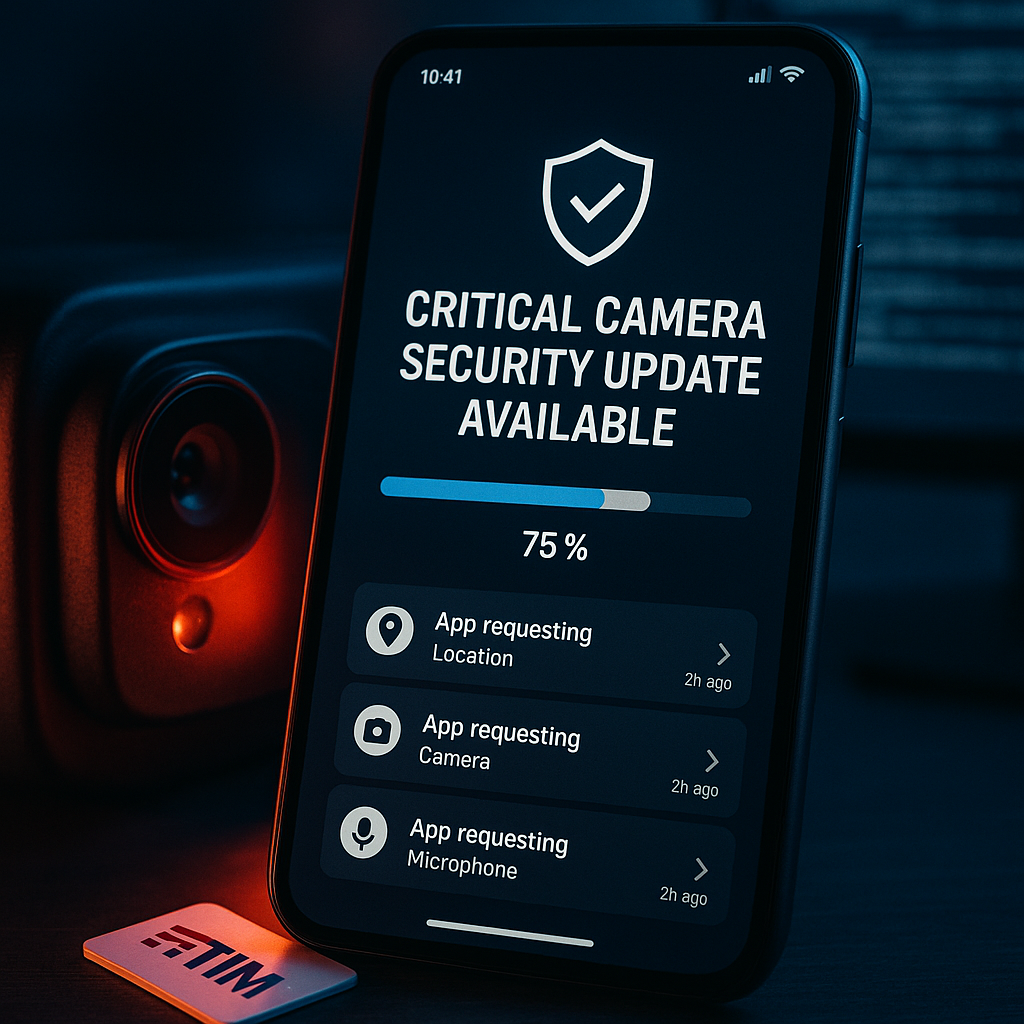Key Takeaways
- Shape your digital routine with intention, not impulse. Instead of chasing every trending app, choose tools that align with your unique workflow and daily habits for a system that truly serves you.
- Automate repetitive tasks to reclaim mindful moments. Use automation to offload busywork and free up mental bandwidth for creative, strategic, or restorative activities that bring fulfillment and value.
- Opt for productivity apps that target real challenges. Prioritize solutions that directly address your core workflow obstacles, whether it’s a smart calendar, focused task manager, or reliable note-taking tool.
- Centralize your digital organization to minimize stress. Create a central hub such as a digital dashboard or a unified inbox. This streamlines your information, notifications, and daily action items, ensuring nothing falls through the cracks.
- Balance efficiency and mindfulness in your tech use. Regularly pause to reflect on how your digital tools are serving you. Adjust when you notice signs of overwhelm, ensuring your routine remains beneficial.
- Set boundaries and integrate digital detox rituals to prevent burnout. Leverage features like app limits, focus modes, or scheduled device-free periods to build in time for rest and authentic offline connection.
- Pursue a holistic approach for lasting productivity and wellbeing. The synergy of automation, smart planning, and intentional boundaries crafts a digital routine that boosts output while safeguarding your mental health. This integration is often the missing piece in sustainable productivity.
Remember, a robust digital routine isn’t about accumulating apps or following rigid rules. It’s about building a support system that seamlessly fits your lifestyle. Next, we’ll explore practical steps for selecting the right tools, setting up automation, and infusing mindfulness into your everyday digital habits.
Introduction
A digital routine isn’t about crowding your device with every productivity app you stumble upon. Instead, it’s about crafting a thoughtful framework that works on your behalf, using the right mix of apps and automation to eliminate busywork, tame digital clutter, and reserve your attention for the moments that matter most. With intentional choices, your tech can become a supportive ally. It helps you stay organized, efficient, and genuinely present in your work and life.
Rather than chasing after the newest shiny app, focus on solutions that fit your workflow, introduce healthy boundaries, and make space for conscious screen breaks. By doing so, you’ll foster a digital rhythm designed for both consistent achievement and sustainable wellbeing. Let’s dive into a step-by-step guide for building this kind of balanced, personalized digital routine.
Assessing Your Digital Needs First
Before you experiment with new apps or automation tools, it’s crucial to step back and assess your unique workflow. A truly effective digital routine aligns with your personal habits and daily demands, making your life easier rather than more complicated.
Un passo avanti. Sempre.
Unisciti al nostro canale Telegram per ricevere
aggiornamenti mirati, notizie selezionate e contenuti che fanno davvero la differenza.
Zero distrazioni, solo ciò che conta.
 Entra nel Canale
Entra nel Canale
Understanding Your Workflow Patterns
Begin by observing your natural work rhythms and productivity patterns. When do you feel energized and focused? Which tasks drain you, and which flow smoothly? A simple self-audit can uncover transformative insights:
- Energy mapping: Track how your energy fluctuates over a week. Identify periods of peak focus versus low motivation.
- Task categorization: Group your daily activities into deep work, routine admin, creative output, communication, and so on.
- Friction points: Pinpoint recurring issues where you lose time, encounter frustration, or become distracted.
This process builds the self-awareness needed to design a digital routine that feels natural and supportive.
Identifying Productivity Bottlenecks
Addressing your specific pain points, rather than generic productivity “advice,” brings the greatest improvements. Common bottlenecks include:
- Context switching: Losing momentum when toggling between multiple tools or tasks
- Information overload: Feeling buried under emails, messages, or documents
- Decision fatigue: Draining mental energy on endless small decisions
- Notification fatigue: Having your focus constantly disrupted by alerts
For instance, if managing multiple email accounts overwhelms you, prioritize solutions that streamline communications. There’s not much need to focus on project management if that’s not your core issue. This targeted approach prevents digital clutter and ensures your efforts directly improve your workflow.
Setting Clear Productivity Goals
Set specific, actionable objectives for your digital routine. What does “productive” mean to you? Examples include:
- Creating uninterrupted time for deep work
- Streamlining incoming requests and communications
- Reducing time spent on repetitive administrative tasks
- Enhancing collaboration and visibility for team projects
With clear goals, you’ll be able to confidently select tools that address what matters most, ignoring distracting trends or unnecessary features. This focus provides a solid foundation for all your subsequent digital organization and automation efforts.
Foundation Tools for Digital Organization
Once you understand your needs, it’s time to establish core digital systems that bring order and reliability. These foundational tools provide the structure supporting your daily productivity and long-term goals.
Digital Note-Taking Systems
A good note-taking tool serves as your external brain, capturing ideas, reference materials, meeting notes, and more. The ideal solution offers:
- Cross-device sync for anytime, anywhere access
- Robust organization (tags, folders, fast search)
- Support for text, images, and audio
- Easy, quick capture from any device
Diverse industry examples:
- Healthcare professionals: Use Evernote or Notion to store medical research, patient notes, or case studies.
- Students and educators: Organize lecture points, research citations, and lesson plans with Obsidian or Apple Notes.
- Legal practitioners: Build searchable knowledge bases for case law and precedents using Notion’s databases.
Choose a tool you’ll actually use. An intuitive, flexible system is far more effective than a complicated platform left untouched.
Task Management Approaches
Your task manager is your day-to-day productivity engine. Options range from basic to comprehensive, so match your tool to your workload:
- Simple list apps like Todoist or Microsoft To Do suit basic tasks and reminders.
- Kanban boards (Trello, Asana) provide oversight for complex workflows in marketing campaigns or software development.
- Time-blocking/planning apps (TickTick, SkedPal) allocate specific hours for appointments or deep work sessions.
- Comprehensive GTD systems help legal teams, educators, or business managers break large projects into actionable steps.
Freelancers and remote workers might lean on robust, client-based boards, while corporate teams may need deeper collaborative functionality.
Calendar Management Strategies
A well-maintained calendar is the command center for your commitments. Integrate it with your task manager for maximum clarity.
- Time-blocking: Allocate protected time for crucial projects, consolidating calls or meetings into set afternoons to maximize focus.
- Task batching: Process similar activities (like emails or billing) during set periods to reduce context switching, a method valuable in finance, legal, and healthcare administration.
- Buffer zones: Schedule transition breaks to avoid back-to-back burnout.
- Energy alignment: Plan analytical tasks when your mind is sharp and leave routine follow-up or emails for lower-energy windows.
Tools for different sectors:
- Healthcare: Calendar integration with patient scheduling platforms reduces administrative errors.
- Finance: Use Google Calendar and Fantastical for managing market analysis reviews and client meetings.
- Education: Block course prep, grading, and meetings using digital calendars like Microsoft Outlook.
By establishing these foundational systems, your digital routine gains a strong backbone. This allows advanced automation and sophisticated organization to flourish.
Smart Task Management & Prioritization
With solid organizational tools in place, the next step is to refine how tasks are managed and prioritized. Efficient systems are powered by thoughtful, realistic strategies that filter out noise and bring your most valuable work to the forefront.
Un passo avanti. Sempre.
Unisciti al nostro canale Telegram per ricevere
aggiornamenti mirati, notizie selezionate e contenuti che fanno davvero la differenza.
Zero distrazioni, solo ciò che conta.
 Entra nel Canale
Entra nel Canale
Implementing Modern To-Do Techniques
Today’s best productivity strategies combine science-backed techniques and practical structure:
- The 1-3-5 Rule: Target one major, three medium, and five small tasks daily to maintain momentum and avoid overwhelm.
- The Eisenhower Matrix: Classify tasks by urgency and importance to focus energy on what matters most while postponing or delegating what can wait.
- Must/Should/Want Method: Balance obligation with aspiration, ensuring your personal interests don’t get sidelined.
Industry applications:
- Legal teams: Use the Eisenhower Matrix in Asana to prioritize client work versus internal admin.
- Educators: Apply the 1-3-5 Rule to lesson planning, grading, and student mentoring.
- Marketing teams: Separate must-do campaign deadlines from aspirational creative brainstorming sessions in Trello or Notion.
Tools like Todoist, TickTick, and Amazing Marvin support customizable approaches, delivering both structure and flexibility for various industries.
Focus & Deep Work Enablers
Maintaining concentration has never been more challenging, or more critical. Leverage both digital tools and habits that encourage deep, meaningful progress:
- Distraction blockers: Freedom, Cold Turkey, and Focus apps restrict access to tempting sites, helping students, writers, and professionals alike reclaim their attention.
- Structured timers: The Pomodoro Technique, with apps like Forest or Focus Keeper, provides rhythmic work and break cycles to boost productivity in high-stakes environments like healthcare or finance.
- Ambient noise tools: Platforms such as Brain.fm and Noisli offer soundscapes that aid concentration, whether you’re tackling legal briefs, coding, or writing.
- Focus modes: System settings (on iOS, Windows, or Android) allow for tailored do-not-disturb periods during critical project work.
Combine these digital interventions with personal rituals (a particular playlist or a workspace setup routine) to signal “focus mode,” reinforcing both external boundaries and internal motivation.
Smart Prioritization Methods
Effective prioritization converts a static to-do list into a roadmap for impact and satisfaction:
- Impact/Effort Matrix: Zero in on high-impact, low-effort items, whether that’s sending client updates, planning a new course module, or updating patient records.
- MoSCoW Prioritization: Essential in software development, marketing campaigns, and even educational content design, this method clarifies “must have” actions from “could have” nice-to-haves.
- Value-based ranking: Align your daily plan with your broader goals and values, giving priority to tasks that drive long-term growth.
Tool solutions:
- Asana and Monday.com: Ideal for teams requiring visual workflows and priority tracking.
- Trello and Notion: Offer granular customization and integration with focus/priority frameworks for both solo workers and collaborative groups.
Smart prioritization blends hard data (like deadlines and KPIs) with human insight into personal goals and energy levels. This balance ensures that technology supports, not dictates, your path to achievement.
Conclusion
Creating your optimal digital routine starts with deep self-knowledge: understanding your unique working style, identifying personal bottlenecks, and setting specific, actionable goals. By thoughtfully choosing foundational tools and integrating strategies that reflect both your responsibilities and aspirations, you lay the groundwork for long-lasting productivity and wellbeing.
Modern task management, focus management, and prioritization strategies transform ordinary checklists into engines for meaningful progress, applicable across industries from healthcare and legal to education, marketing, and finance. The secret is not complexity, but intentional design. Use technology as a supportive partner that empowers efficiency while safeguarding your capacity for deep, rewarding work.
Looking forward, those who proactively build and regularly refine their digital systems, remaining open to experimentation while protecting their boundaries, will stay nimble in a world of changing tech and rising demands. Whether you’re guiding a team, managing a classroom, building a freelance career, or balancing personal obligations, the digital routines you create today will define your success and wellbeing tomorrow. The real question isn’t how many tools you use, but how intentionally you make technology work for you. Stay curious, stay flexible, and let your digital routine evolve alongside your ambitions. After all, true productivity is not just about getting more done. It’s about making space for what matters most.





Leave a Reply